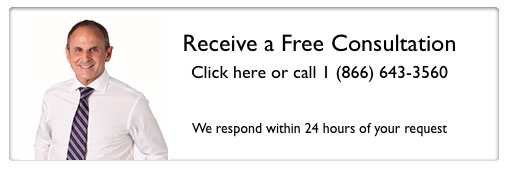
What’s the most important thing that your business needs on a regular basis?
The answer to this question is simpler than you might think. It’s not regular customers, or productive employees, or plentiful inventory.
The answer is CASH.
Which is why it’s so important for business owners to track cash and project cash needs in the future. In this article, we’ll give you our top 6 useful tips to get an accurate cash flow projection.
Cash Flow: What It Is and Why It’s Important
Most accounting methods record income when it’s earned instead of when the cash shows up at your door. This leaves a disconnect between sales numbers and actual cash in hand. Let’s look at an example.
You own a taco business. You sell $10,000 worth of tacos to Customer A on January 1, to be delivered on February 1. You’ll then record that sale in your income statement under gross sales.
To anyone looking at your books, it looks like your business has grossed $10,000. But you won’t see the cash from that sale until February 1 when you actually deliver the tacos.
Between January 1 and January 31, you had to pay out $8,000. This bought stuff like tortillas, meat, and spices. And it paid for things like rent, insurance on your taco machine, and wages to your employees.
On January 31, your income statement shows that you made $2,000 in profit for the month. But from a cash standpoint, you’re in the hole by $8,000.
This is why tracking cash flow is so important. When you know how cash flows in and out of your business, you have more control.
Not only is it important for you, but investors and banks will also want to see your projections. In the above example, you might approach a bank for an $8,000 operating line of credit to pay for your January expenses.
They’ll want to know where that dollar amount came from and how you plan to pay it back. Projections are the best way to get the necessary financing in place before you run out of cash.
6 Tips for Cash Flow Success
Here are our favorite tips to help you project cash flow successfully.
1. Track Cash & Income Separately
Use a separate bookkeeping system to track cash flow versus income and expenses. Most accounting software can track both. But if you don’t have fancy software, you can use a spreadsheet to record real-time cash transactions.
If you keep your historical financials separate, it’s easier to project the future. Your accountant will also want to see this information to prepare financial statements for your business. So keeping them separate is helpful to everyone.
2. Base the Future on the Past
Base cash flow projections on historical financial performance. Many businesses have seasonal fluctuations. Notice these patterns by studying historical cash flow information.
Your taco business might do better in the summer. So there might be more cash coming in during those months. Use this knowledge to project next summer’s cash flow.
Start with your sales forecast for the period you plan to project. If you’re planning to grow your business, add this into the equation. Then you’ll see how growth affects your ability to generate cash.
If you don’t have historical figures to work from, base projections on market research. Talk to other business owners and do plenty of internet research on your industry.
3. Break Down Projections Into Smaller Pieces
You want to see cash flow on several levels. Most businesses opt for monthly and annual cash flow projections. This shows you where you’ll be a year in the future and how you’ll get there.
But if you need to, break it down into weekly projections too. This is especially helpful if your business handles lots of transactions every week.
Work on the smaller projections first. Take the amount of cash on your balance sheet at the beginning of the period as your starting point. Add cash in and deduct cash out to get the ending cash level for the period.
Ending cash for one period is beginning cash for the start of the next period. Do this weekly. Then work up to monthly, and finally, annual projections.
4. Prepare for Unexpected Cash Expenditures
Unexpected expenses are an inevitable part of any business. So prepare for them by working them into your cash flow projections.
If you know that your taco delivery van will need some repair work in the future, account for this in your projections. Or if you expect rent to increase, add that in too.
But it’s not always easy to project these things. So your best bet is to build a cash cushion into your projections. Consider it a miscellaneous expense that you always include in case of emergencies.
And don’t forget about Uncle Sam! Taxes aren’t an unexpected expense, but don’t let them sneak up on you. Always include tax payments in projections.
5. Know Your Customers
What terms do you give your customers for payment? Understanding your receivables is a big deal for projecting cash flow.
Retail receivables are immediate because the customer always pays before they leave the store. Other businesses expect to be paid for services within 30 days.
But that’s all dependent on the industry. If you’re doing work for the government, for example, your receivables might be further out, say 60-90 days. Use this information to make your projection more accurate.
6. Check Your Projections to Reality
It’s super important to compare prior projections to real numbers after the fact. This gives you an idea of how accurate you’re projecting cash flow. It also shows you where you made mistakes and where you can make improvements.
Maybe you’re consistently projecting a cash surplus in July. But for the past two July’s, you’ve had a shortfall. Then you need to change up your methods.
Get an Accurate Cash Flow Projection Every Time
Creating an accurate cash flow projection is essential for any business. Use projections to manage spending, obtain financing when you need it, and to grow sales.
Remember to always use historical numbers to make more accurate projections. Understand your receivables and prepare for unexpected expenses. And check projections to actual numbers to see how you can improve.
At Gary M. Kaplan, CPA, PA, we’re always available to help our customers. Contact us for help with your business financials today!


